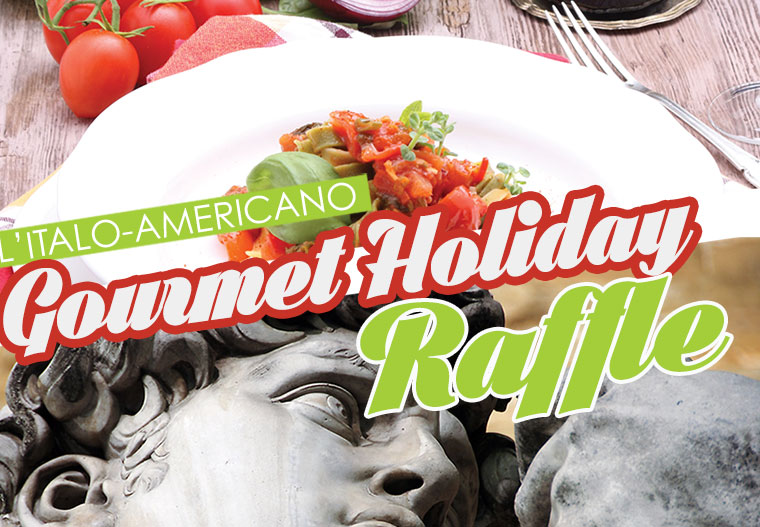Everyone has favorite childhood memories, and one of mine is of the lovingly prepared food whose aromas filled the air of my old neighborhood in the Cape Cod village of Sagamore. It was genuine Italian food, rich, honest and simple. Some children may have had visions of sugarplums dancing in their heads; I had ravioli, tortellini and biscotti.
If I smelled something interesting while playing in the back yard or walking the streets, I would often follow my nose, which led me to some of the best northern Italian kitchens and cooks anywhere. There was always something good cooking on those stoves.
One morning I saw our neighbor Rosina, a slight woman in an apron, her gray hair pulled back in a bun, coming home with a basket of fresh wild mushrooms. I followed her inside and watched her prepare these exotic-looking fungi for the family’s supper.
Into the sauté pan with the cleaned mushrooms went a silver dollar, a large sprig of parsley and a slice of white bread. I asked her why, and in broken English she explained the folk beliefs that guided her. “If the silver tarnishes and the parsley turns color, the mushrooms are not good,” she explained.
“But what about the bread?” I asked.
She threw up her hands and said, “You feed the bread to the chicken. If the chicken dies you throw the mushrooms out!”
Many of Sagamore’s Italian families are descended from immigrants who arrived between 1890 and 1910, most of them from northern Italy. The men came first, and hundreds of them worked for the Keith Car Manufacturing Co., building wooden railroad cars. Then as now, family and friends enjoyed close, warm relationships that were often nourished with home-cooked food.
The custom of having large, informal get-togethers is still strong; many families in the area think nothing of having 25 or 30 people for a full-course sit-down dinner. If you happen to walk in the door at that time, you are warmly invited to join. “It’s a way of keeping the family ties together,” says Margaret Tonello, who has lived all her life in Sagamore.
The food varies only slightly, whether the occasion is a family get together, anniversary, wedding, baptism or funeral. Everyone brings a favorite specialty, homemade stuffed pasta or a meat dish or a liquor-flavored custard dessert or loaves of sweet bread. No one thinks of going empty-handed.
After 20 years, away, I returned to live near the village of Sagamore, and recently decided to try recreating a slice of my culinary past. I invited eight northern Italian cooks from my old neighborhood for a Sunday cook-in. Each cook prepared a favorite recipe handed down from her mother.
My kitchen was full of activity and discussion of how things should be done. As everyone began cooking, I brought out my version of my Aunt Mary’s bagnet, made with parsley, green peppers and anchovies and used as a snack or served with a boiled dinner. There were raised voices and hands flying — “That’s not the way my mother made it!” or, “This is not the way the Piemontese make it!” — and as many opinions followed as there were people in the kitchen. In the end, though, it was agreed that Aunt Mary’s bagnet was pretty good.
A large bottle of red wine was uncorked with a corkscrew that belonged to my grandfather and was used to open many of his home-made bottles of wine.
Gradually, the table grew crowded with finished dishes. Madeline Dante did her version of gnocchi. “I make them with ricotta cheese rather than potato. They are much lighter, fluffier and much easier on the digestive system,” she says.
Rose Sorenti made ravioli stuffed with Swiss chard and cream cheese, and Alba Pappi contributed the rabbit with polenta for which she is known in town. She turned the polenta out on the same board my grandfather used for so many years.
Margaret Tonello did her mother’s version of chicken cacciatore (also served with polenta). “This is the first time in my life I ever measured anything,” she commented. “It’s always been a pinch of this and a pinch of that.” All the other cooks agreed; they rely on experience and instinct to decide how much of an ingredient should go into the pot.
Yolanda Tavares made tasty veal rollettes that were served with Judy Papi’s frittura dolce, sweet Cream of Wheat squares that are battered and fried. “We use the frittura as a substitute for bread,” said Pappi. “It’s eaten with meats like veal.”
In the dessert line, Laura Borghi made anise biscotti and Muffy Maiolini made a coffeecake called brazadela. Both are great for dunking in red wine, as is the Italian custom.
It’s nice to know some things don’t change. My memories and fantasies of childhood foods became reality that recent Sunday, thanks to eight women who still cook in the traditional way.
Note: Since I wrote this article many of my dear Italian ladies have passed on. But I still have the memories of these great Italian cooks through recipes and cooking.
BRAZADELA
“Here is my friend Mafalda (Muffy) Maiolini’s rustic recipe for her dense coffee cake. I make it frequently especially during the winter months.
In order to write this recipe, I watched Muffy make this cake. It was typical of the way the Italian women in the village of Sagamore cooked. I had to constantly ask her how much of this and how much of that she was using. She could not tell me.
So, I measured her ingredients. In her mind, there was no question as to the amounts she was putting in the cake. Putting this cake together came second nature to her. It was created through instinct and intuition. She just did it!”
• 4 cups all-purpose flour
• 2 tablespoons baking powder
• 1 cup sugar
• 1/8 teaspoon salt
• 1/4-pound (1 stick) butter, cut in small pieces
• 1 cup raisins, soaked in warm water or whisky for 15 minutes
• 4 eggs, slightly beaten
• 1 1/2 ounces’ whiskey
• 1 teaspoon lemon extract
• 1 tablespoon vanilla
• 1/4 cup milk
• 1/2 cup dense jam or mincemeat
• 1 egg
• 2 tablespoon milk
• 2 teaspoons sugar
Preheat oven to 350 degrees. Butter and flour a 15-inch pizza pan or flat pan with sides. In a large bowl combine the flour, baking powder, sugar and salt.
With your fingers work the pieces of butter into the flour mixture until granular in texture.
Then turn the mixture onto a work surface and make a large well in the center.
Put the eggs, raisins, whiskey, lemon extract, vanilla and milk in the center.
With a fork or with your fingertips, combine the liquid mixture with the flour until the ingredients are well incorporated and you can form a ball.
Do not knead.
Cut dough in half. With your hands roll it into two 2-foot long rolls about 2 1/2 inches in diameter.
Take one roll, place it on the pan making a large ring and seal ends together.
With your fingers, make small indentations in the dough and fill each with savor or mincemeat.
Place the second ring on top of the first.
Beat the egg with the milk and brush the rings with the mixture.
Sprinkle with sugar and bake in a 350-degree oven for 40 to 50 minutes.
Test with a cake tester or knife for doneness.
Makes one cake, serves 8 to 10
John F. Carafoli wrote the seminal book Food Photography and Styling His latest book Great Italian American Food in New England, History, Traditions & Memories is now available on Amazon.com and in bookstores. He has been published in Gastronomica, The Journal of Food and Culture, The New York Times, The Boston Globe, and Edible Cape Cod and has been profiled in the Italian publication of ER (Emilia Romagna). For more information write carafoli@me.com
































